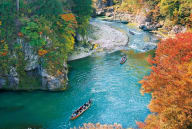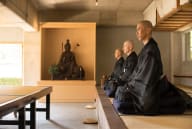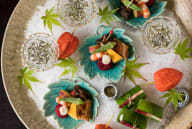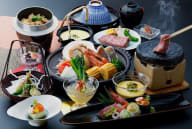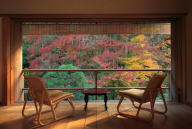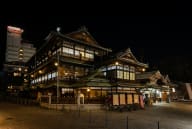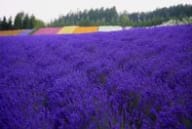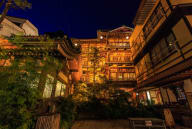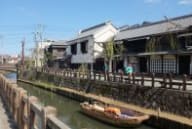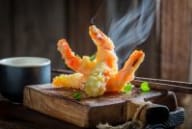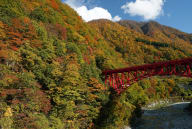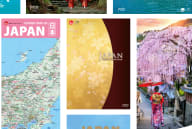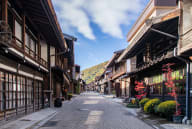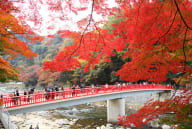
Hyogo Taste the Fusion of Flavours from Near and Far
A Culinary Journey in Hyogo
Hyogo Prefecture is a vibrant blend of historical landmarks, natural beauty, and a diverse culinary tradition. Bordered by the Sea of Japan to the north and the Seto Inland Sea to the south, Hyogo enjoys a varied climate with warm summers and cool winters, creating favourable conditions for agriculture, fisheries, and traditional crafts.
Hyogo is celebrated for its rich agricultural produce, forestry products, and seafood. The fertile plains and hills produce a variety of crops, including Kobe beef, renowned for its marbled texture and melt-in-your-mouth flavour, and Tajima rice, prized for its high quality and delicate taste. The prefecture's coastal waters are teeming with seafood delicacies, whereas onions from Awaji island are renowned for their sweetness and versatility in culinary dishes.
The food culture of Hyogo is deeply rooted in its history as a key port and trade center, exemplified by the vibrant Chinatown in its capital city of Kobe. The prefecture's cuisine blends local ingredients with culinary influences from across Japan and foreign countries, resulting in distinctive dishes from Kobe beef sukiyaki to high-quality western confectionaries. You can immerse yourself in a culinary journey that highlights Hyogo's rich flavours and cultural diversity, whether snacking around the grounds of the historic Himeji Castle or enjoying a meal at a teppanyaki restaurant.
Discover the tastes of Hyogo’s vibrant food scene and historical charm.
Kobe beef

What it is (Ingredients)
Kobe beef is renowned worldwide for its exceptional quality and marbling, which gives it a melt-in-your-mouth texture and rich flavour. Raised in Hyogo prefecture (where Kobe City is located), Kobe beef comes from Tajima cattle, a specific breed that is carefully raised according to strict standards. The beef is known for its tender, fatty cuts, which are lightly seasoned and grilled to perfection.
History/Origin
Kobe beef has a storied history dating back over a century in Hyogo. The breeding and production of Kobe beef emphasize quality over quantity, with each animal receiving meticulous care and attention to ensure its meat achieves the desired marbling and flavour profile. Kobe beef is a designation reserved for Tajima beef from Hyogo that meets specific standards. This dedication to excellence has made Kobe beef a symbol of culinary prestige and luxury around the world.
Where to Eat
Due to its popularity, Kobe beef is served at high-end restaurants nationwide. However, its true home is in Hyogo Prefecture, particularly in Kobe City, where you can enjoy it at exclusive teppanyaki restaurants, steakhouses, and fine dining establishments. These specialty venues offer the exquisite flavour and tenderness of Kobe beef in various cuts and cooking methods.
When to Eat
Kobe beef is a delicacy enjoyed year-round, though it is said that when winter arrives, cows accumulate fat to protect themselves from the cold, leading to high-quality marbling with exceptional richness. Its succulent texture and rich flavour make it a favourite among discerning diners seeking an unforgettable culinary experience.
Indulge in the unparalleled taste of Hyogo's Kobe beef, where tradition, craftsmanship, and exceptional flavour converge to create a dining experience like no other.
Akashi-yaki (Octopus dumplings with soup)

What it is (Ingredients)
Akashi-yaki is a specialty dish from Hyogo consisting of fluffy octopus dumplings. The main ingredients include a batter made from eggs, flour, and dashi, into which pieces of octopus are added. These dumplings are cooked in a special pan until golden brown, then served with a light dipping broth.
History/Origin
Akashi-yaki originated in the city of Akashi, Hyogo, and is considered a precursor to the more widely known Takoyaki. Akashi-yaki dates back in 1800s, and is also referred to as tamagoyaki by the locals. It reflects the area's rich fishing culture and its abundance of fresh octopus, while the unique preparation and serving methods highlight the culinary creativity of Akashi's chefs.
Where to Eat
Akashi-yaki can be enjoyed at specialty shops and traditional restaurants throughout Hyogo prefecture, especially in Akashi City. These establishments often offer a cozy dining experience where guests can savour the delicate flavours and textures of freshly made Akashi-yaki.
When to Eat
Akashi-yaki is popular year-round, and can be enjoyed as a snack, appetizer, or light meal. Its comforting warmth and savoury flavour make it particularly appealing during cooler months. However, it was originally intended to be eaten with cold soup stock, so some restaurants now serve it this way.
Delight in the authentic taste of Hyogo with Akashi-yaki, a dish that captures the essence of the locals’ culinary heritage and love of fresh seafood.

















